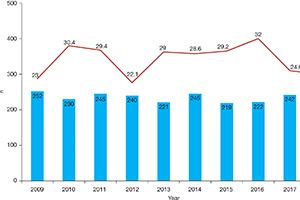Triple patch technique to repair ventricular septal rupture
Abstract
Postinfarction ventricular septal rupture (VSR) remains an important and life-threatening complication of myocardial infarction (MI). Although several techniques have improved surgical outcomes of postinfarction VSR, the treatment is still challenging with a high mortality rate. In addition, it is well known that a postoperative residual shunt after VSR repair is associated with poor outcomes; however, late outcomes involving patients with a residual shunt after VSR repair are lacking. This paper presents the early and late outcomes of patients who underwent the triple patch technique to repair a VSR and the usefulness in reducing a postoperative residual shunt. The main process of this technique is that the patch is gently placed on the myocardium with over and over suture and is firmly attached using glue. Therefore, the triple patch technique is simple and easy to perform, and is designed to minimize residual shunt and exclude infarcted myocardium. In the present keynote lecture, we describe our surgical technique and the results of VSR repair.
Cover






